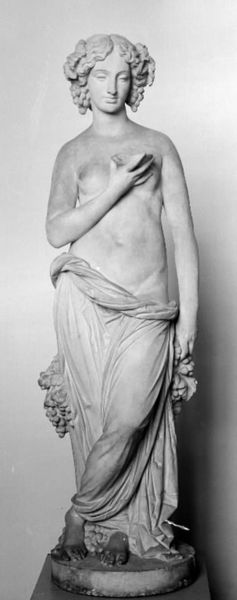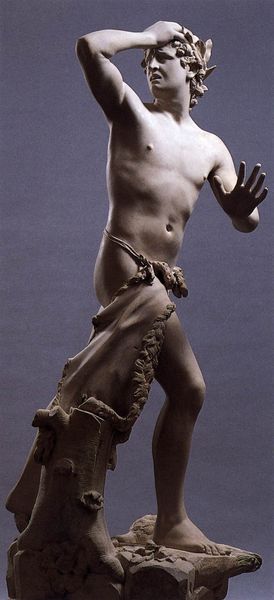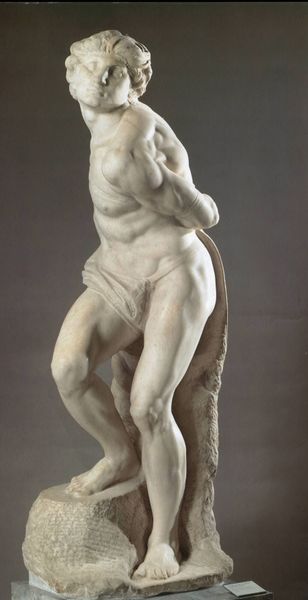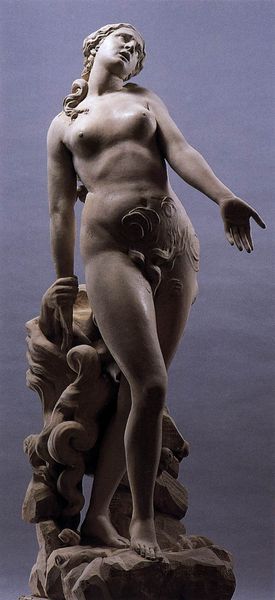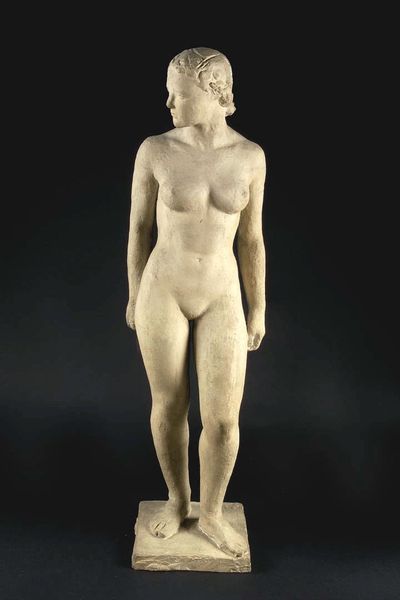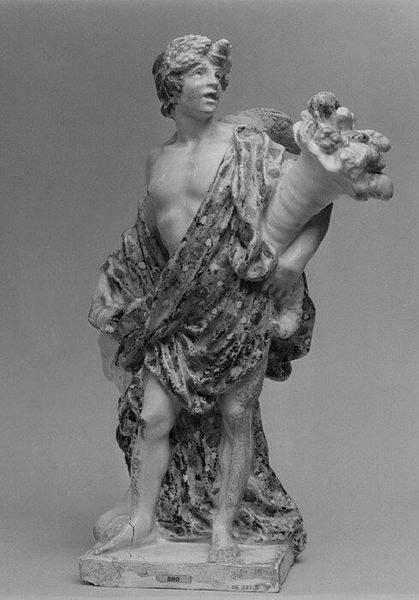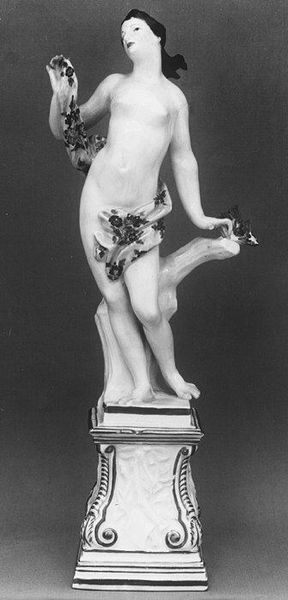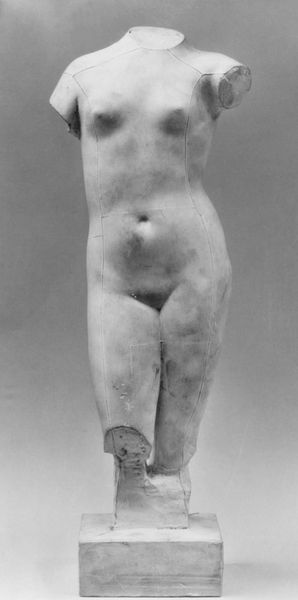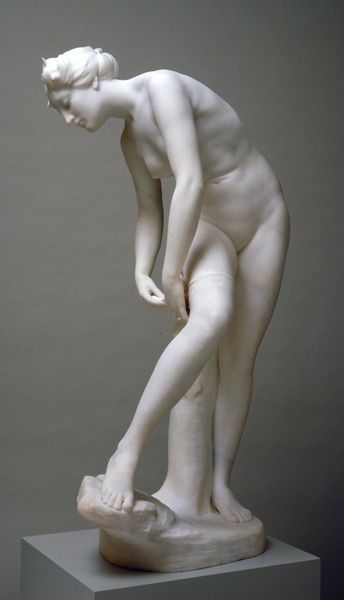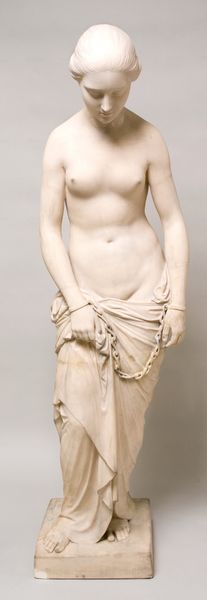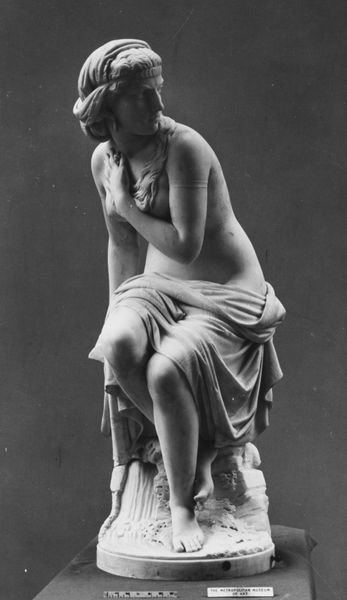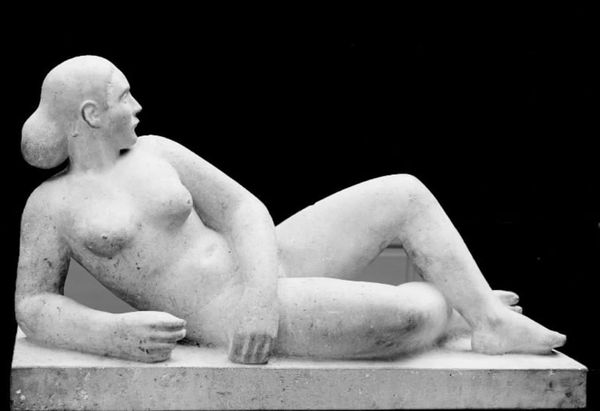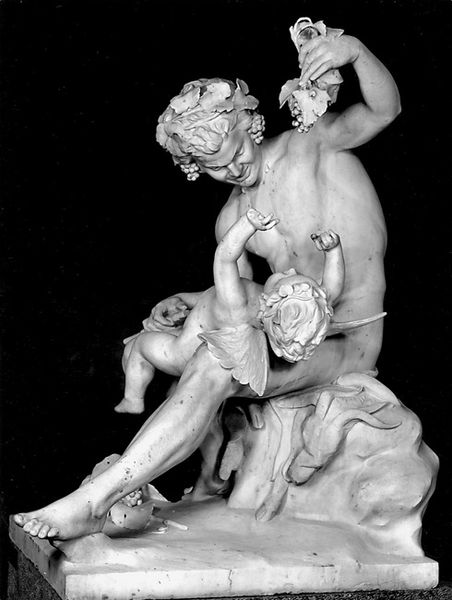
sculpture, marble
#
sculpture
#
mannerism
#
figuration
#
sculpture
#
marble
#
nude
Copyright: Public domain
Curator: This beautiful marble sculpture is titled "Fata Morgana." We attribute it to the workshop of Giambologna, and its specific date is unknown. What are your initial impressions? Editor: The first word that comes to mind is "graceful." The soft curves and the delicate draping over which the hand is poised—there's a real sense of refined movement here. Curator: Indeed. I think this exemplifies the Mannerist aesthetic quite well. The figure, a nude woman, embodies an idealized form that was en vogue in art circles during the late Renaissance period, not to mention how the very production and acquisition of such sculpture acted as cultural capital in its own time. Editor: That's interesting. It's easy to get caught up in the elegance and overlook the societal structures at play. I mean, marble wasn’t exactly a readily available material. And the process… from quarrying the stone to the artist's studio, the labour involved must have been extensive, turning raw resources into something perceived as sophisticated. It begs the question, who were the artists, artisans, and even the enslaved laborers involved? Curator: Precisely! And where and for whom was it intended? A private garden? A princely collection? Its subsequent display significantly alters its meaning. To gaze upon the goddess is, for modern visitors, to inherit a legacy that is entangled with elite privilege and patronage, ideas which museums now try to disentangle through education and interpretation. Editor: You know, thinking about the reception of art objects like this today… it's also interesting to consider how photographic representations and plaster casts transformed the way "Fata Morgana" reached wider audiences. Even black-and-white photos, like the one here, influenced its fame. Curator: Certainly! The image circulated in popular books, altering its function and significance again. Our understanding shifts depending on these historical frames. Editor: This whole dialogue makes me more conscious of seeing this piece in isolation when it has been embedded in production networks and systems of power for so long. Curator: Yes, approaching "Fata Morgana" with these frameworks offers not only historical richness, but helps reflect upon present values that may even challenge existing power imbalances.
Comments
No comments
Be the first to comment and join the conversation on the ultimate creative platform.
